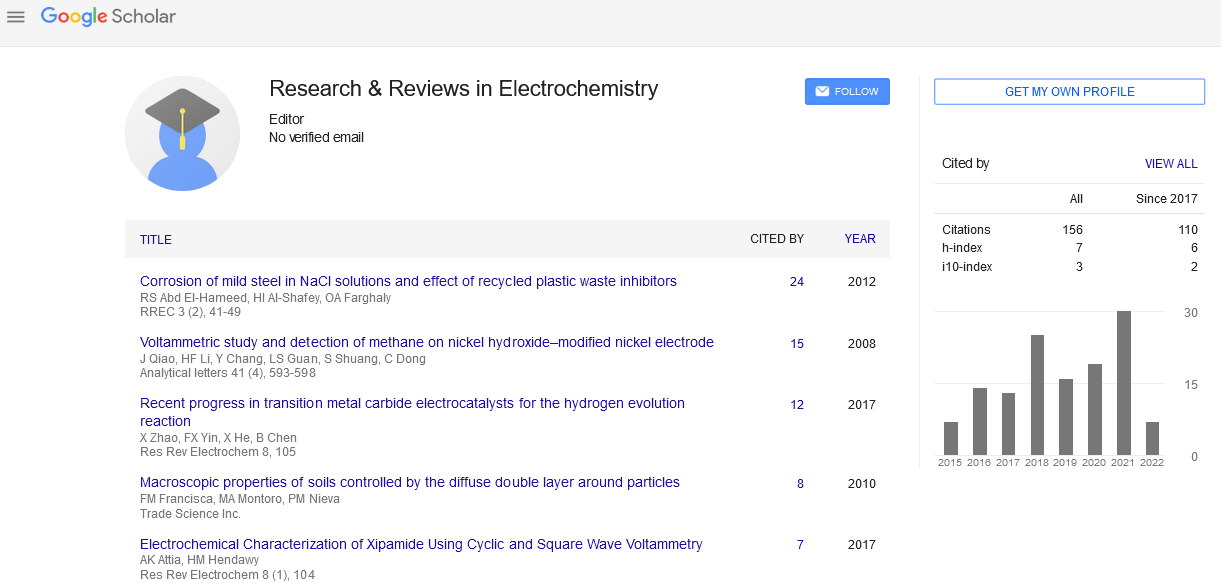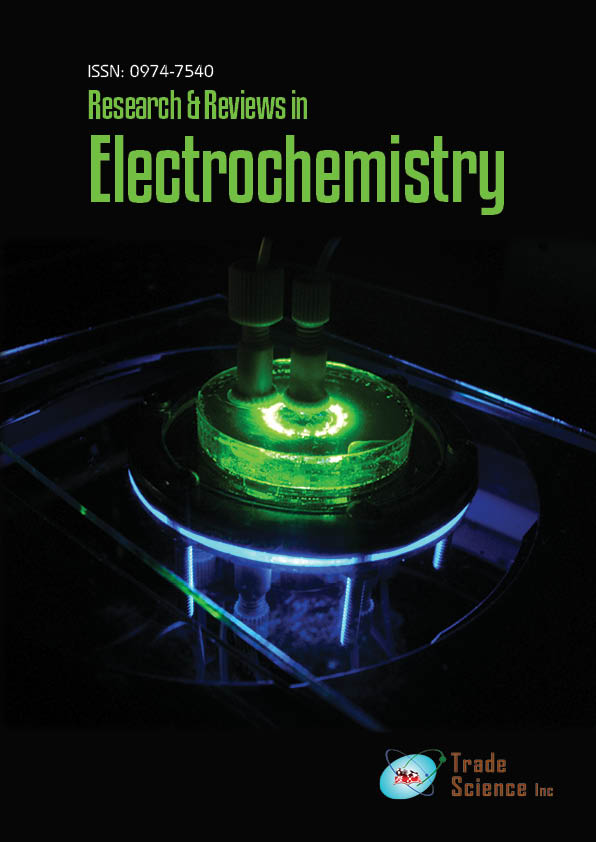Editorial
, Volume: 8( 1)Theory in Modern Electrochemistry: Science for the Academic Ivory Tower or a Vital Tool for Today's Research?
- *Correspondence:
- Enno Katelhon , Department of Chemistry, Physical and Theoretical Chemistry Laboratory, Oxford University, UK, E-mail: enno.kaetelhoen@chem.ox.ac.uk
Received: February 13, 2017; Accepted: February 15, 2017; Published: February 17, 2017
Citation: Katelhon E. Theory in Modern Electrochemistry: Science for the Academic Ivory Tower Or a Vital Tool for Today's Research.Res Rev Electrochem. 2017;8(1):e101.
Abstract
Introduction
Electrochemistry fascinates through the enormous diversity of physical effect and systems it embraces as well as the interdisciplinary nature of problems it attacks, placing it right at the interface of physics, chemistry, and mathematics. Historically emerging from research on galvanism in the sixteenth century and the first batteries in the early seventeenth century, combined experimental and theoretical efforts enabled the discovery of fundamental laws of electrolysis soon after by Faraday and, one hundred years later, the invention of polarography by Heyrovsky. These findings still set the basis of most of today's electrochemical and electroanalytical studies, even though now applied in a much broader context: Aside from drastic advances in the detection of molecular species and in the development of batteries, the last decades saw a growing interest in biosensing, the measurement and characterization of individual nanoparticles, and the detection of individual biological species such as enzymes, viruses, and individual cells.
Inspite of the vast variety of physical systems that are of electrochemical interest, similar or even identical theoretical tools can be applied in many cases. On the one hand and in the sense of the strict definition of electrochemistry, heterogeneous chemical reactions are linked to electrical currents at interfaces through appropriate kinetic models. On the other hand, the mass transport of electroactive species is taken into account, which can usually be modelled as isotropic or anisotropic diffusion and in few cases as combined diffusion and convection. Once corresponding models are identified, vital theoretical predictions can be made via solving mass transport equations subject to boundary conditions, which link chemical reactions to electrode potentials and evaluate electrode currents through Fick's and Faraday's laws.
Numerous analytical and numerical approaches provide solutions to the above mass transport problems. In few rather simple cases, analytical results can for instance be achieved via Laplace mathematics as shown in the famous 1964 paper [1] by Nicholson and Shain. Solutions to more complicated geometries and boundary conditions however typically require the use of numerical methods such as Finite Differences, Finite Elements or Random Walks, and can be found via commercial software packages or self-made [2] software. It is however noted that for chronoamperometry and cyclic voltammetry, which at least provide a starting point in most electrochemical investigations, simple analytical solutions exist for common scenarios: Readily-accessible quantities such as the steady-state current in a chronoamperogram or the height of the first on the back of an envelope, while the respective equations are provided in standard textbooks [3,4] and never further away than just a quick on-line search.
In the following I come back to the title of the editorial, which is mainly inspired by two observations:
First, the review of recent literature reveals that the electrochemistry community generally appreciates the development of new theory, as it can be seen from the large number of studies being published in peer- reviewed journals. At the same time, it can however secondly be observed that inspite of the availability of appropriate theory experimental results are often not compared to their theoretical equivalents. While the reasons for this are certainly complex and beyond the scope of this text, there are good reasons why it is be worth to invest the time and effort:
Verification of reaction models
If appropriate theory exists, anticipated reaction models can be confirmed via direct comparison. It can be demonstrated that the suggested physical processes actually match theoretical predictions and other processes may be ruled out.
Extraction of additional information
Vital information on important properties of the investigated system may be easily extracted from experimental data. Electrode kinetics may be identified and quantified, and the nature of the mass transport revealed.
Reference values
The performance of novel electrode materials, such as certain porous-, nano-structured-, or chemically- Modified can be directly compared with the performance that would be expected for a standard system. By this means, one can not only show that one material performs better than another, but provide exact reference values which will be cited in future studies. In the light of the wide availability of theoretical tools and the significant additional physical insight that can be gained from experimental studies, I would like to use this opportunity to encourage a wider consideration of theoretical findings in experimental studies.
References
- Nicholson RS, Shain I. Theory of stationary electrode polarography. Single scan and cyclicmethods applied to reversible, irreversible, and kinetic systems. Anal Chem. 1964;36(4):706-23.
- Compton RG, Laborda E, Ward KR. Understanding voltammetry: Simulation of electrodeprocesses. Imperial College Press, 2013.
- Bard AJ, Faulkner LR. Electrochemical methods: Fundamentals and applications. 2nd Ed. Wiley;2001.
- Compton RG, Banks CE. Understanding voltammetry. 2nd Edition. Imperial College Press,2011.

